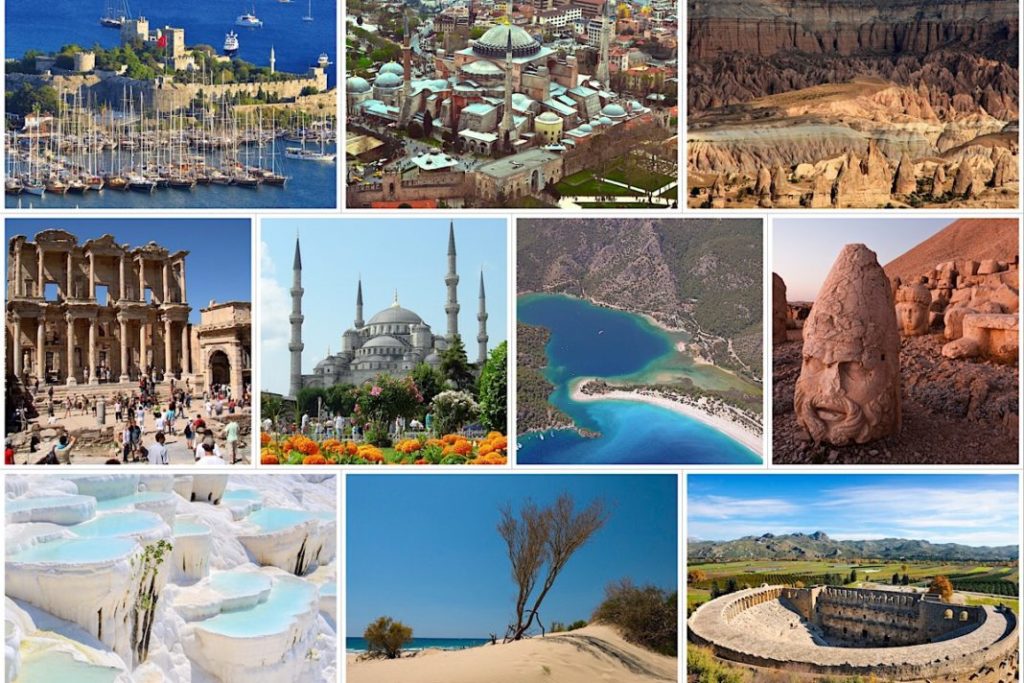Not only is Türkiye overwhelmingly gorgeous, its cities and landscapes are also incredibly diverse, offering a wealth of different kinds of destinations to holidaymakers.
From the beaches of Ölüdeniz and the Mediterranean seaside resorts to the Roman ruins along the western and southern coasts, the dome and minaret-filled skyline of Istanbul and the misty mountains of the Eastern Black Sea.
With so many amazing destinations, a top ten is bound to leave some great tourist attractions in Türkiye out. So consider this list of destinations as just the start of a great holiday in Türkiye.
10. Aspendos Theatre
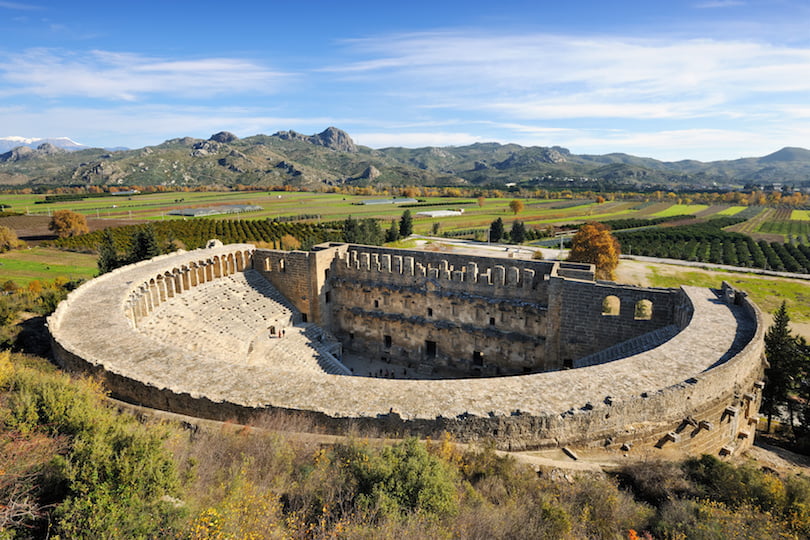
Aspendos boasts one of the best-preserved ancient theatres of antiquity. The theatre of Aspendos was built in 155 AD during the rule of the Roman Emperor Marcus Aurelius and could seat between 15,000 and 20,000 spectators. Because the stage area was later used as a caravanserai (a roadside inn) in Seljuk times, it was continuously repaired and maintained. Thus, the Aspendos Theatre has been able to survive to this day without losing almost any of its original qualities.
You can read more about Aspendos here.
9. Patara Beach
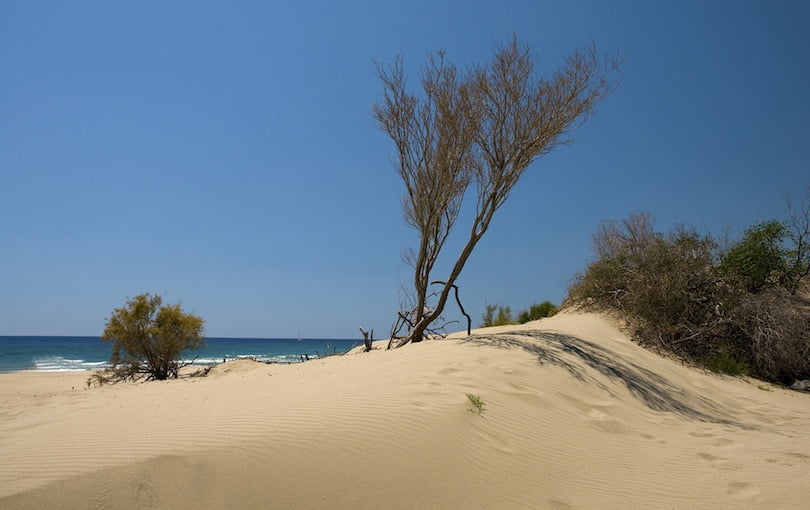
At 14 kilometres (9 miles), Patara is one of the longest stretches of sandy beach found anywhere in the Mediterranean. The beach is backed only by ancient Lycian and Roman ruins and sweeping dunes, with no buildings visible except a small café. Patara Beach is also the breeding ground of the endangered Loggerhead turtle. The nearby village of Patara was the birthplace of St Nicholas, the 4th-century Byzantine bishop who later passed into legend as Santa Claus.
8. Pamukkale
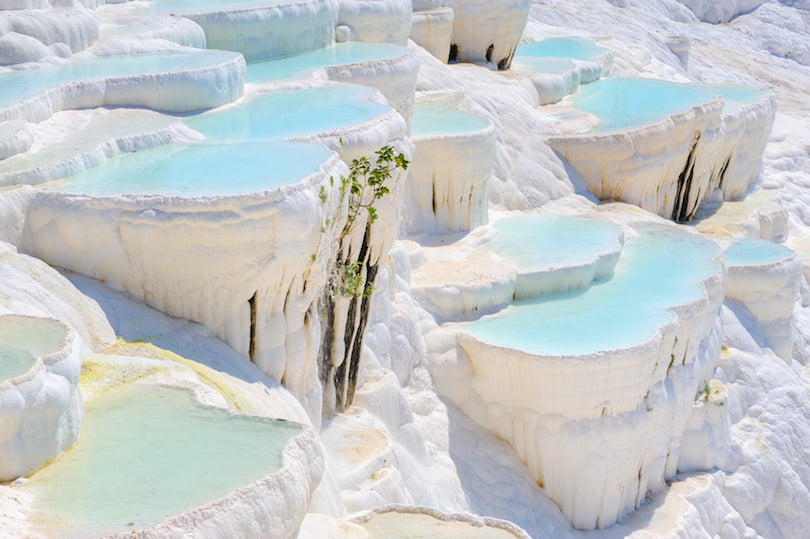
Pamukkale, meaning “cotton castle” in Turkish, is an unreal landscape in western Türkiye, famous for its white terraces. The terraces are made of travertine, a sedimentary rock deposited by water with a very high mineral content from the hot springs. People have bathed in its pools for thousands of years. The ancient Greek city of Hierapolis was built on top of the hot springs by the kings of Pergamon. The ruins of the baths, temples and other Greek monuments can be seen at the site.
You can read more about Pamukkale here.
7. Bodrum Castle
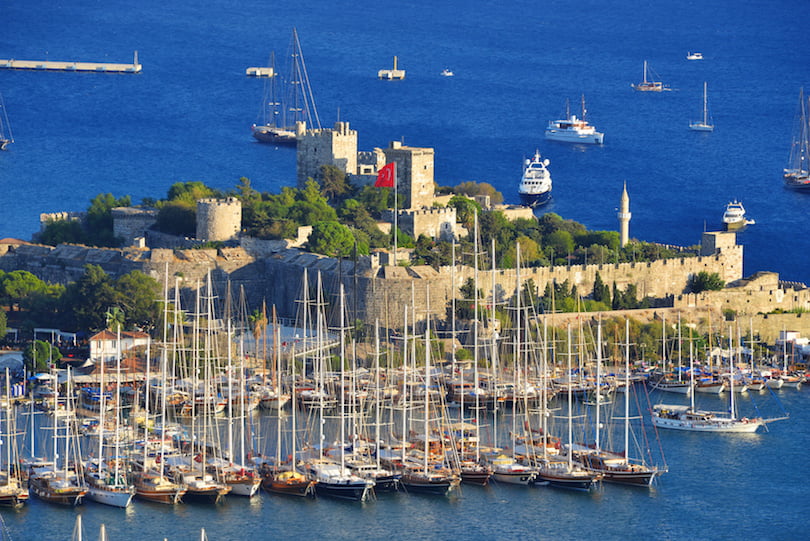
Located in the city of Bodrum in southwest Türkiye, Bodrum Castle was built by the Crusaders in the 15th century as the Castle of St. Peter. It is one of the world’s best-preserved monuments dating back to medieval times. The castle now operates as a museum, with a focus on the Museum of Underwater Archaeology. It overlooks the internal marina of Bodrum filled with millions of dollars worth of sailing crafts.
6. Mount Nemrut
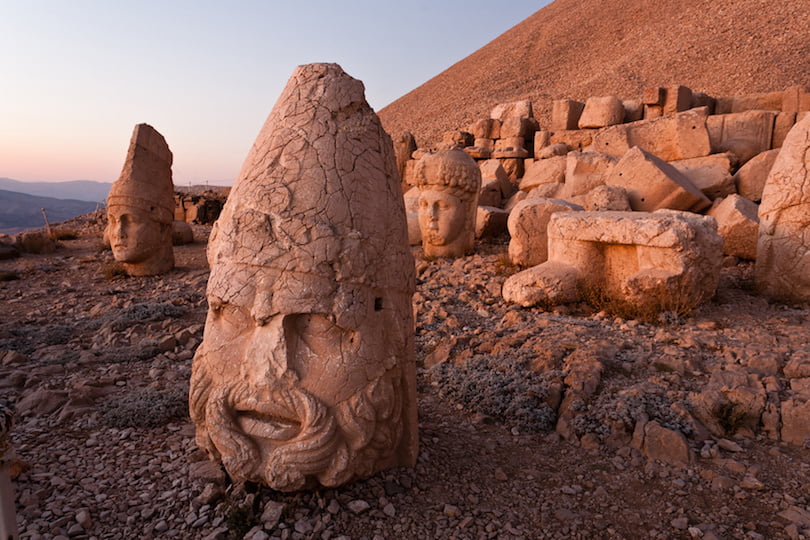
Nemrut is a 2,134-meter (7,001 ft) high mountain in southeastern Turkey, near the city of Adıyaman. In 62 BC, King Antiochus I Theos of Commagene built a tomb sanctuary flanked by huge statues of himself, two lions, two eagles and various Greek, and Persian gods on the mountaintop. Since their construction, the heads have toppled from the bodies and lay scattered throughout the site. The summit of Mount Nemrut provides a great view of the surrounding mountains. The main attraction is to watch the sunrise from the eastern terrace which gives the bodyless heads a beautiful orange hue and adds to the sense of mystery of the place.
You can read more about Mount Nemrut here.
5. Ölüdeniz

Ölüdeniz is a resort located on the southwest coast of the Mediterranean Sea. It has a secluded sandy bay at the mouth of Ölüdeniz, on the world-famous blue lagoon. This beach is famous for its shades of turquoise and remains one of the most photographed beaches on the Mediterranean. Ölüdeniz is also regarded as one of the best places in the world to paraglide due to its unique panoramic views.
4. Blue Mosque
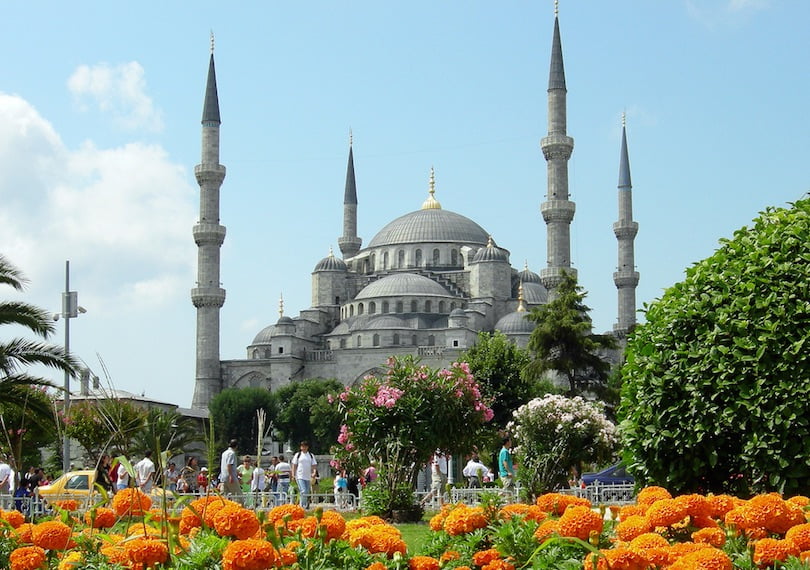
With its six minarets and sweeping architecture the Sultan Ahmed or Blue Mosque in Istanbul impresses from the outside. While still used as a mosque, the Blue Mosque has also become one of the most popular tourist attractions in Istanbul. It was built between 1609 and 1616 and, like many other mosques, contains the tomb of the founder. Inside the mosque, the high ceiling is lined with 20,000 blue tiles with different patterns that give the mosque its popular name.
3. Library of Celsus
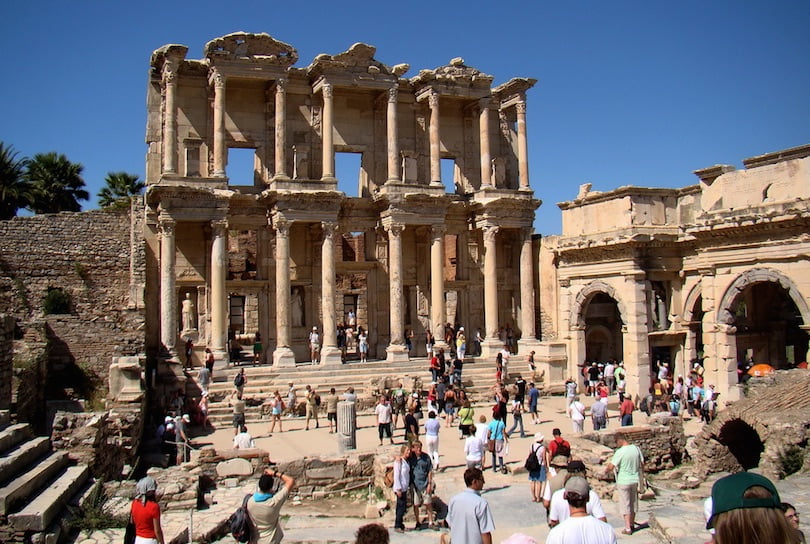
The ruins of Ephesus are a popular tourist attraction on the west coast. The city of Ephesus was once famed for the Temple of Artemis, one of the seven wonders of the ancient world, which was destroyed by a mob led by the archbishop of Constantinople in 401 AD. Some of the structures can still be seen, however, including the Great Theater and the Library of Celsus. The library was built around 125 AD to store 12,000 scrolls and to serve as a monumental tomb for Celsus, the governor of Asia. The facade was carefully reconstructed in the 1970s to its present splendid state from the original pieces.
You can read more about Ephesus here.
2. Göreme Fairy Chimneys

Cappadocia is famous for its weird and wonderful natural rock formations and unique historical heritage. One of the best places to see these strange formations is the town of Göreme, which is located among a large number of tuff cones, termed fairy chimneys. The fairy chimneys have been formed as the result of wind and water erosion of two different volcanic layers: a thick layer of tuff (consolidated volcanic ash) covered by a thin layer of basalt that is more resistant to erosion. Due to the ease of carving into the tuff, many of the fairy chimneys at Cappadocia have been hollowed out over the centuries to create houses, churches and storage facilities.
1. Hagia Sophia
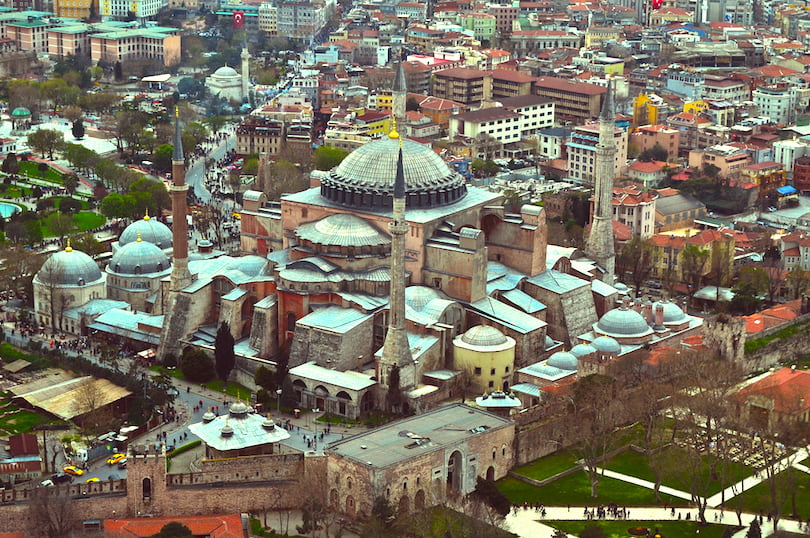
Located in Istanbul, the Hagia Sophia was originally a basilica constructed for the Eastern Roman Emperor Justinian I in the sixth century. A masterpiece of Roman engineering, the massive dome (31 meters or 102 feet in diameter) covers what was, for over 1000 years, the largest enclosed space in the world. The church was looted by the fourth Crusaders in 1204 and became a mosque in the 15th century when The Ottomans conquered the city. The Hagia Sophia was converted into a museum in 1935 and is now one of the top attractions in Türkiye.
Source: touropia
This article was first published on 4 January 2018.

